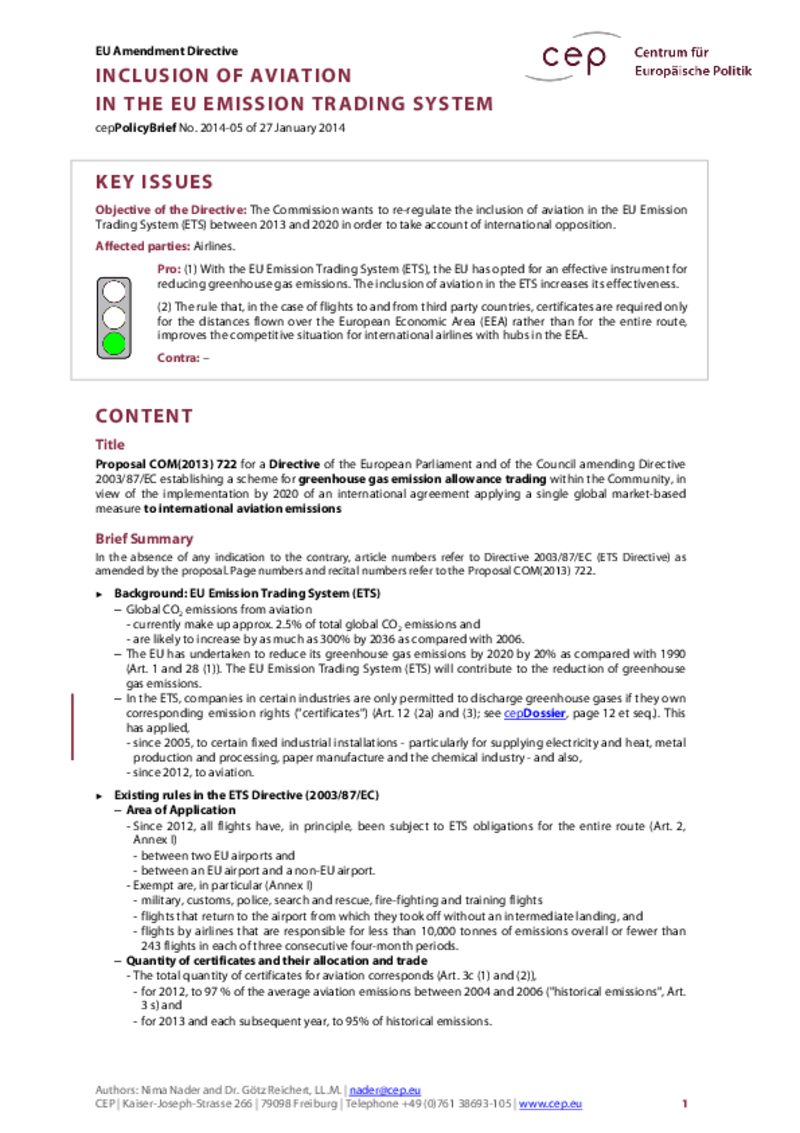Airlines can only emit greenhouse gases if they own the corresponding emission rights ("certificates"). Since 2012, all flights have, in principle, been obliged to own certificates for the entire flight distance between two EU airports and flights between an EU airport and an airport in a non-EU country. As the inclusion of aviation in the EU Emission Trading System (ETS) has come up against considerable international opposition, the EU resolved that, in 2012, the ETS would only apply to flights between EU airports. The European Commission now proposes that airlines should require certificates for emissions from flights to and from third party countries between 2014 and 2020 in respect of the distance flown over the European Economic Area (EEA).

With the EU Emission Trading System (ETS), the EU has opted for an effective instrument for reducing greenhouse gas emissions. The inclusion of aviation in the ETS increases its effectiveness. The rule that, in the case of flights to and from third party countries, certificates are required only for the distance over the EEA rather than for the entire route, improves the competitive situation for international airlines with hubs in the EEA.





